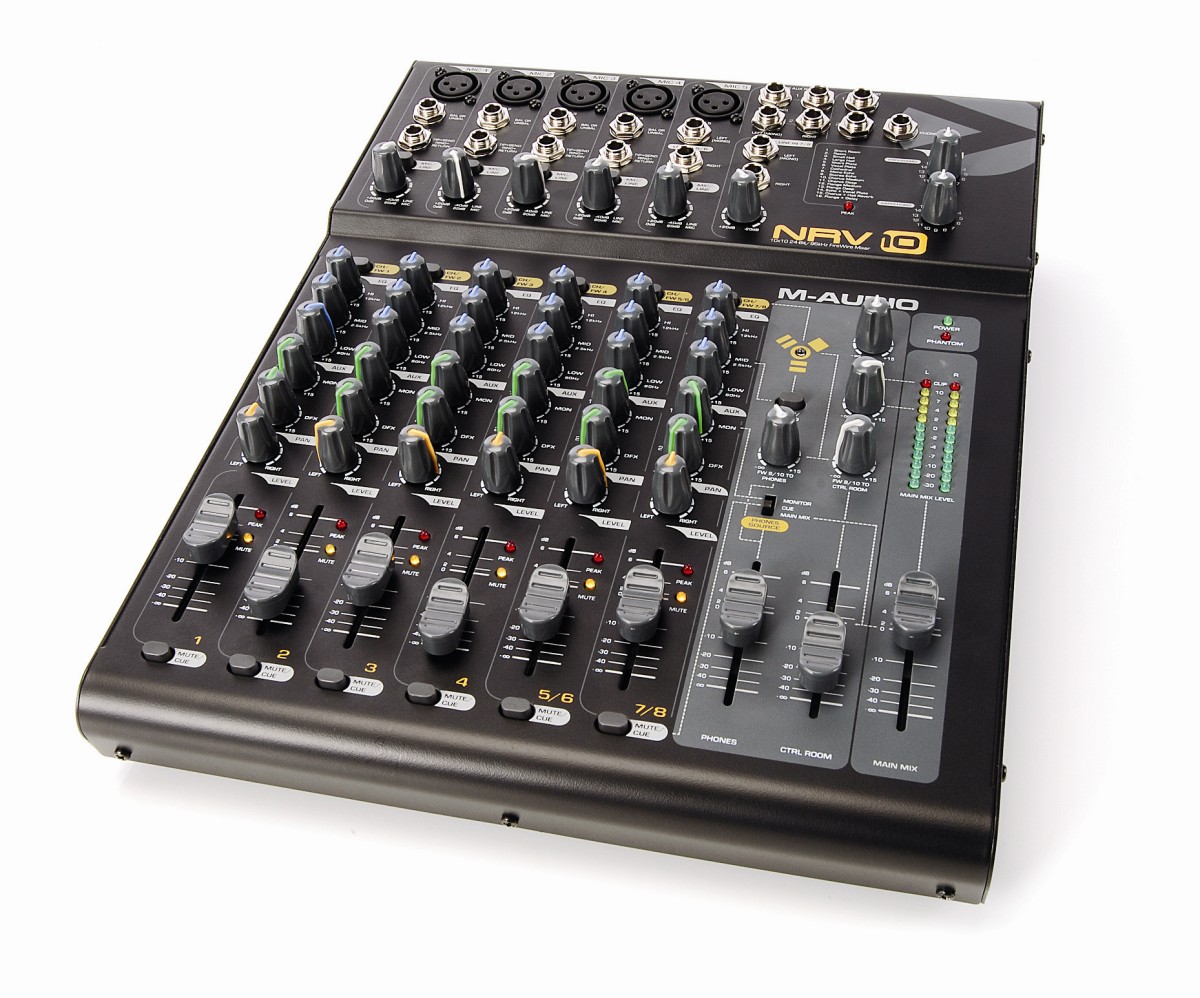MusicRadar Verdict
Flexible and well-priced, the NRV10 is well suited to songwriters, soloists and DJs.
Pros
- +
Very good software integration. Clear layout.
Cons
- -
A little guesswork needed sometimes.
MusicRadar's got your back
There´s no shortage of analogue mixing desks sporting digital connectivity of either USB or FireWire flavour. But with so many desks, it seems like the digital bit has been plonked on as an afterthought.
Not so the M-Audio NRV10, which not only functions as a standalone 8:2 analogue mixer, but is also a 10x10 FireWire audio interface by which multiple channels of audio can be sent to, and returned from, a PC or Mac. So you can use the desk´s EQs and effects whether recording or playing back, taking a load off your processor.
The mixer is a sturdy, rackmountable, metal-cased job with four mono and two stereo channel strips, the first five channels featuring phantompowered XLR ins. Channel inserts make for inline processing and there are two aux sends with stereo returns. Above each 3-band EQ is a switch with which you can toggle between Channel and FireWire, and another switch enables you to route the input signal to pre and post the EQ section.
The desk´s knobs are rather large for comfortable operation if you´ve got large mitts, but the frequency bands are well configured at 80Hz, 2.5kHz and 12kHz - although there´s no LF cut. However, the EQ section is neutral and flexible. In the aux section, there´s the option to route signals to a limited selection of 16 onboard effects including reverb, delay, chorus and more - and there´s an associated knob by which to apply variations to each effect. There´s no read-out of which variation is which, so some guesswork is needed when dialling in the appropriate effect.
The NRV10´s chunky faders are high-tension, making them tougher to move than some - inconvenient for quick level tweaks but good for accurate adjustments - and their travel is smooth. Output-wise, there are individual sliders for phones and control room, plus a single stereo master slider routed to a choice of quarter-inch TRS or XLR balanced outs, nestled alongside jacks for stereo control room outs and main mix insert jacks.
Easy-going
Getting up and running with the supplied drivers and FireWire cable is painless - within minutes, your computer is the hub of a flexible audio network, with an onscreen dialogue (via System Preferences/Control Panel) giving a view of input and output levels. Sampling is up to 96kHz, 24-bit on all channels, which is plenty for most applications. The real bonus offered by the NRV10 (aside from the facility to route multiple tracks of digital audio to a DAW) is that, come playback, you´ve an amount of multitrack control over the mix. You can set up a basic mix in the studio, then haul mixer and computer into a venue and make final adjustments via the desk (rather than faffing around in software) and use the mixer´s onboard effects (rather than loading up the computer). You can also route live signals, such as vocals, through the desk while doing so.
In action it´s straightforward. The layout is unfussy and the software integration is excellent. Solo musicians running computer-based backing tracks from a DAW, and digital DJs driving such software as Live 6, will find the NRV10 handy for onstage use. Modest project, studio-bound songwriters will love its audio-routing flexibility. Of course, some will hanker for more channels, greater EQ flexibility and a more capable DSP section. But for the price, the NRV10 offers enough.
MusicRadar is the number 1 website for music makers of all kinds, be they guitarists, drummers, keyboard players, djs or producers...
GEAR: We help musicians find the best gear with top-ranking gear round-ups and high- quality, authoritative reviews by a wide team of highly experienced experts.
TIPS: We also provide tuition, from bite-sized tips to advanced work-outs and guidance from recognised musicians and stars.
STARS: We talk to musicians and stars about their creative processes, and the nuts and bolts of their gear and technique. We give fans an insight into the actual craft of music making that no other music website can.
“Every note counts and fits perfectly”: Kirk Hammett names his best Metallica solo – and no, it’s not One or Master Of Puppets
Ranked: Bon Iver's albums, from Sable, Fable to For Emma, Forever Ago
“Its mission is simple: unleash the power of any amplifier or line-level source without compromise”: Two Notes promises a “watershed” in tube amp control with the Torpedo Reload II











